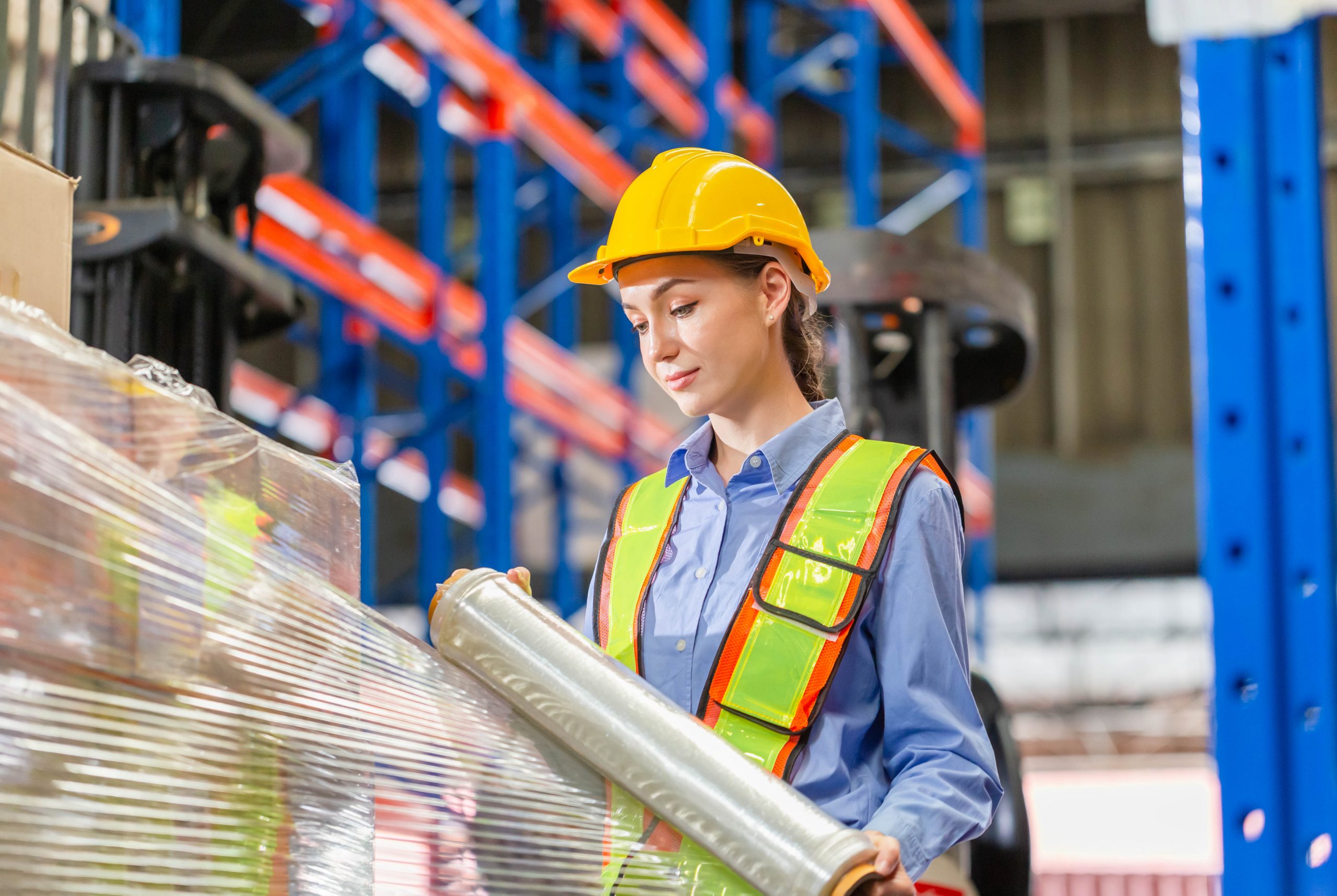Essential methods and equipment for successful manual palletising
Manual palletising plays a crucial role in ensuring efficient and secure handling of goods. While automated solutions have gained popularity in large warehouses, manual palletising remains a preferred method due to its flexibility and lower cost. Achieving successful manual palletising goes beyond simply stacking boxes onto the pallet. It requires a well-thought-out method and the use of specific equipment to ensure stability, safety, and optimisation of storage and transportation space.

What is manual palletising?
Manual palletising is a fundamental component of logistics and warehousing, enabling efficient management of goods. It involves the process of arranging and stacking merchandise onto a pallet in an organised and strategic manner before storage or transportation. Unlike automated palletising or packaging machines, it is performed manually by operators, offering flexibility and adaptability for small batches or irregular sized products.
Manual palletising offers several significant advantages, including:
- Flexibility: It allows rapid adaptation to different product types and sizes, which is particularly useful for small orders or special items.
- Increased control: Operators can inspect and adjust the arrangement of goods to maximise pallet space and ensure load stability, reducing the risk of product damage.
- Cost reduction: Less expensive than automated systems, manual palletising requires a lower initial investment and can be implemented with standard equipment.
- Adaptability: It is ideal for companies that handle a variety of products and require a more personalised palletising approach.
By understanding the principles of manual palletising and recognising its advantages, companies can optimise their storage and transport operations, thereby improving the overall efficiency of their supply chain.
How to implement successful manual palletising
To succeed at manual palletising, you need to follow a structured palletising method that optimises both storage space and pallet stability. Effective manual palletising typically follows these steps:
- Planning: Before starting, evaluate the dimensions and weight of the products to be palletised. Plan the arrangement to optimise space and stability.
- Pallet selection: Choose the appropriate pallet type based on the goods’ total weight and transport requirements.
- Base arrangement: Start by placing the heaviest or most stable items at the base of the pallet, ensuring even weight distribution.
- Stacking: Stack the products by alternating directions to increase stability. Use all available space without exceeding the pallet limits.
- Securing: Use stretch film or other securing materials to keep the products in place. Make sure the load is tightly secured and stable.
- Labelling: Apply shipping and identification labels visibly and accessibly.
Quality control should be performed at each step. Ensure proper product packaging and compliance with safety standards during stacking. Check the pallet’s stability by gently shaking it to make sure no box movement is possible. A final inspection before shipping can prevent many issues during transport.
Essential equipment for manual palletising
Once the pallet preparation is complete, the next step is to get the appropriate equipment to ensure efficient and secure palletising. Here are the essential tools and accessories for carrying out this task successfully.
Pallets
Choosing the right pallet is fundamental in the palletising process. Consider the following main pallet types:
- Wooden pallets are the most common. They are appreciated for their robustness and relatively low cost. They suit most storage and transportation needs.
- Plastic pallets are lighter and often more durable than wooden pallets as they are more resistant to moisture and pests. They are ideal for environments with strict hygiene standards.
- Metal pallets are used for transporting heavy loads or for repeated use in harsh conditions. They are the most durable but also the most expensive.
The pallet choice will depend on the nature of the products, weight requirements, environmental considerations, and economic factors.
Suitable boxes and bins
Choosing the right boxes and bins ensures your products’ protection and stability throughout transport:
- Box selection: Use sturdy boxes suitable for the weight and nature of the products to be packaged. High-quality boxes minimise the risk of deformation and contribute to load stability.
- Pallet boxes: For maximum stability, opt for pallet boxes that fit perfectly with the dimensions of your pallet, offering additional protection and optimising storage space.
Stretch film and wrapping tools
To secure loads onto pallets, using stretch film and a film dispenser is essential. They keep products in place, protect them against dust and moisture, and can contribute to load stability:
- Stretch protective films: Available in different thicknesses and qualities, some films are pre-stretched for easier application, better material economy, and pallet wrapping.
- Film dispensers: These tools facilitate the stretch film application, allowing for uniform tension and reducing physical effort. They are available in manual or semi-automatic versions.
- Shrink gun: For loads requiring additional protection, a shrink gun allows the application of a shrink film that perfectly conforms to the shape of the goods, offering increased cohesion and stability.
Strapping accessories
Effective strapping is synonymous with safety for your goods. Manual tensioners, manual strapping tools, and semi-automatic strapping machines are key tools for ensuring the stability of your pallets:
- Manual tensioner: For occasional strapping operations, a manual tensioner allows you to effectively tighten strapping around the pallet, ensuring load cohesion.
- Manual strapping tool: A practical solution for medium palletising volumes, allowing you to join and tighten strapping more easily and quickly.
- Semi-automatic strapping machine: For companies with higher strapping needs, this tool offers a quick solution and reduces physical effort, thereby increasing productivity.
Protection and safety
Using pallet caps, corner protectors, and slip sheets plays a role in preserving your goods’ integrity during transportation and storage:
- Pallet caps and corner protectors: Protect your pallets’ top and corners against weather, dust, and shocks with these essential accessories.
- Slip sheets: Use slip sheets to evenly distribute weight on the pallet and improve load stability, preventing undesirable product movement.
By properly equipping operators and choosing equipment tailored to the specific needs of manual palletising, companies can not only improve their operating efficiency but also ensure the safety and protection of goods throughout the supply chain.
Download our white paper “Sustainable packaging: Your guide to eco-friendly packaging“.






